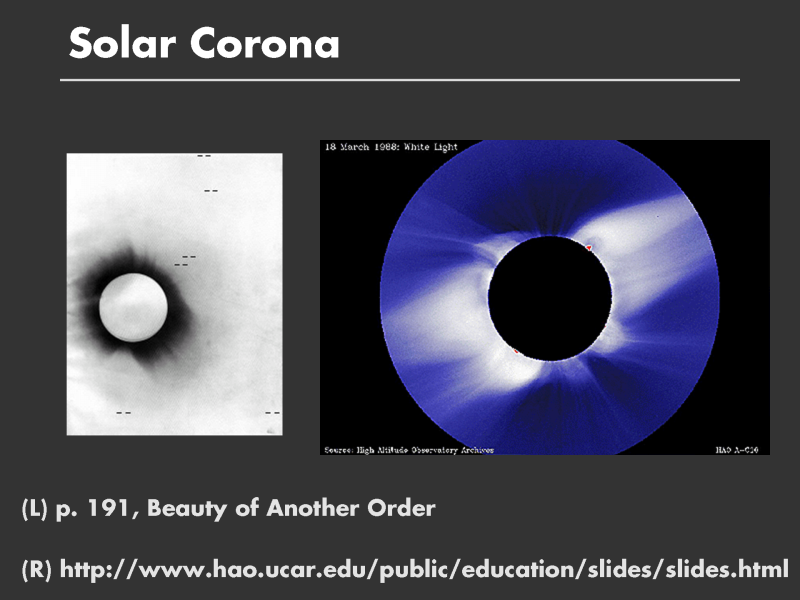
This idea of forming a difference image is powerful. Under normal viewing conditions you can?t see the solar corona because the sun is so bright. Many early scientists realized that a good time to observe the properties of the sun was during a total eclipse. On the left is a picture taken during the eclipse of 1919; on the right is a picture taken in 1988 in the Philippines. These pictures show the wispy, looping tracks of particles in the corona under the influence of the sun?s magnetic field.
C. R. Davidson and A. C. D. Crommelin, who took the picture on the left, mounted an expedition to Brazil in 1919 under the sponsorship of the Royal Observatory at Greenwich to observe the corona and surrounding star field during a total eclipse. It is easy to imagine them traveling around the world, setting up their cameras on the mountain top, patiently waiting until the sun is completely occluded, snapping the picture, and eagerly developing the film to see the phenomenon they wanted to capture. In fact, their expedition made the first observations of the deviation of star light rays caused by the mass of the sun, as predicted by Einstein?s theory of general relativity.
Besides being a good example of a difference image, this image represents the great insight and careful planning that is associated with the best experiments.
Reference.
[1] A history of early photographic observations of the sun during total eclipses is contained in ?Capturing the Light: Photographing the Universe? by Ann Thomas in ?Beauty of Another Order: Photography in Science, Ed. by Ann Thomas. The story behind the image of the sun taken by Davidson and Crommelin is from the description on p. 191.